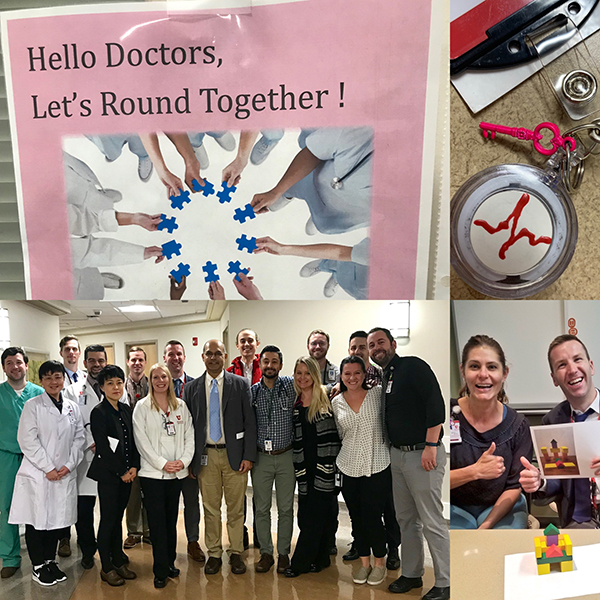Feature by: John Ryan, MD, Associate Professor, Division of Cardiovascular Medicine
It takes a lot to get patient care right – it does not take a lot to get it wrong. On the Cardiovascular Medicine Unit (CVMU), there are many touchpoints for patients – from when the patient first arrives on the floor and are greeted by the health unit coordinator; when they meet their nurse for the first time; when they meet the intern, followed by the resident, then the fellow, and then the attending; when the pharmacy technician meets with them, when the pharmacist interviews them; when the case management team spends time with them; then at night when new nurses and new residents are involved; then when the custodial services stop by and the nutrition team meet with the patient; the physical therapy and occupational therapy teams also spend time with the patient.
On the Cardiovascular Medicine Unit (CVMU), there are many touchpoints for patients – from when the patient first arrives on the floor and are greeted by the health unit coordinator; when they meet their nurse for the first time; when they meet the intern, followed by the resident, then the fellow, and then the attending; when the pharmacy technician meets with them, when the pharmacist interviews them; when the case management team spends time with them; then at night when new nurses and new residents are involved; then when the custodial services stop by and the nutrition team meet with the patient; the physical therapy and occupational therapy teams also spend time with the patient.
And then at discharge, many of these teams, and more, have interactions with the patient. If any one of these myriads of interactions are viewed as negative, it can tarnish the entire patient experience - even if the clinical outcomes were good. And that is not fair on the patient.
Therefore, within CVMU, we have been working towards improving communication, and in fact have made communication the “key” to good clinical care. Although it is uncommon that people purposefully communicate poorly, it is a skill that requires attention and practice. We have provided replica keys to our teams to remind them of the importance of communication. We have also had workshops, where team members tell each other how to build a structure with building blocks – again demonstrating that what you tell people can be interpreted dramatically differently. We have also emphasized the role and importance of the medical team, the pharmacy team and the nursing team all rounding together at the patient’s bedside. This makes for big teams, but it means that everyone, including the patient is aware of the plans and there is no inconsistency in the message being delivered.
We still have a long way to go, but these efforts are paying off for our teams, our staff and most importantly for our patients.